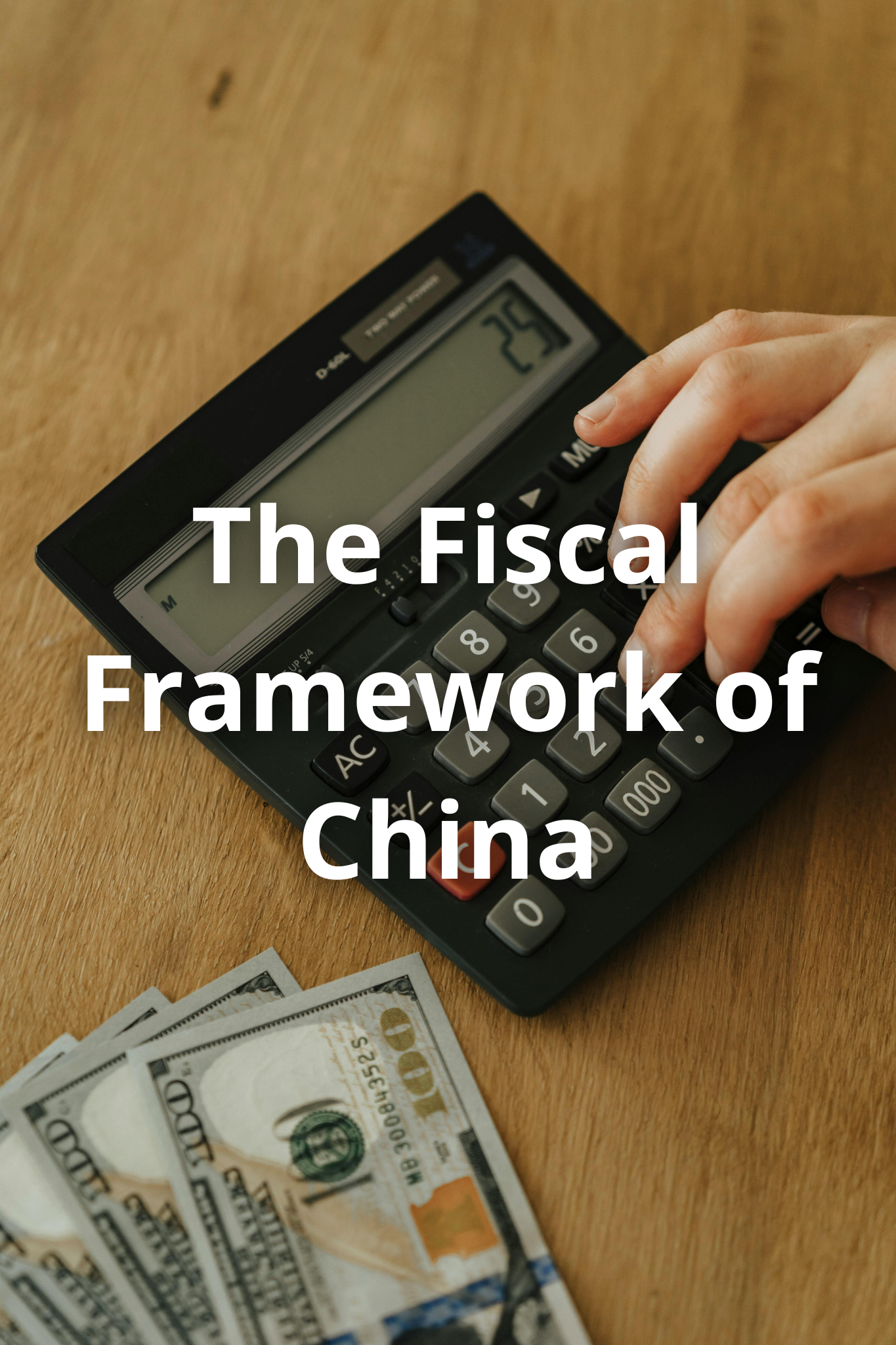
China, with its rapid economic growth and significant global influence, has a unique and multifaceted tax system that plays a crucial role in shaping its economic landscape. This essay explores the complexities of China’s tax framework, its impact on individuals and businesses, and the ongoing reforms aimed at ensuring sustainability and growth.
Read also: The French Fiscal Landscape
Historical Context and Evolution
China’s tax system has undergone significant transformation since the establishment of the People’s Republic of China in 1949. Initially, the tax system was designed to support a centrally planned economy, with taxes primarily serving as tools for redistributing resources and controlling production. However, with the economic reforms of the late 20th century, China shifted towards a market-oriented economy, necessitating a comprehensive overhaul of its fiscal policies.
The introduction of the Tax System Reform in 1994 marked a pivotal change, aligning China’s tax structure more closely with international standards. This reform established the current framework, which includes various types of taxes aimed at supporting economic development and public welfare.
Structure of the Chinese Tax System
China’s tax system is structured to include a variety of direct and indirect taxes, each serving specific purposes within the broader economic strategy.
Individual Income Tax (IIT): The IIT in China is progressive, with tax rates ranging from 3% to 45% based on income levels. Individuals are taxed on their worldwide income, with deductions available for expenses such as social insurance contributions, housing loans, and education. Recent reforms have increased the standard deduction and introduced additional special deductions to reduce the tax burden on middle-income earners.
Corporate Income Tax (CIT): The standard corporate income tax rate in China is 25%, but certain sectors, such as high-tech enterprises, can benefit from reduced rates. The CIT applies to all income earned by resident enterprises and income sourced within China for non-resident enterprises. To promote regional development, the government offers various tax incentives and holidays in special economic zones and free trade zones.
Value-Added Tax (VAT): VAT is the largest source of tax revenue in China, applied to most goods and services at rates ranging from 6% to 13%. The VAT system is designed to tax the value added at each stage of production and distribution, ultimately borne by the end consumer. The recent VAT reform reduced the standard rate from 16% to 13%, aimed at reducing the tax burden on businesses and stimulating economic activity.
Consumption Tax: This tax applies to specific luxury goods and products with negative externalities, such as alcohol, tobacco, and high-emission vehicles. The rates vary depending on the type of product, designed to both raise revenue and influence consumer behavior.
Property-Related Taxes: China imposes several property-related taxes, including the Urban and Township Land Use Tax, the House Property Tax, and the Land Appreciation Tax. These taxes are aimed at regulating real estate markets and generating revenue for local governments.
Social Insurance Contributions: Both employers and employees contribute to social insurance funds, covering pensions, medical insurance, unemployment insurance, and housing provident funds. The rates vary by region, but they represent a significant cost for businesses and individuals alike.

Impact on Individuals and Businesses
China’s tax system has profound implications for both individuals and businesses, influencing economic behavior and financial planning.
For Individuals: The progressive IIT system is designed to promote social equity by taxing higher incomes at higher rates. The recent introduction of special deductions for education, medical expenses, and housing loans aims to alleviate the financial burden on individuals, particularly middle-income earners. Additionally, the social insurance system provides a safety net, though the high contribution rates can be challenging for lower-income individuals.
For Businesses: The corporate tax rate and VAT are significant factors in business operations and profitability. Tax incentives for high-tech and strategically important industries aim to foster innovation and economic development. However, compliance with the complex tax regulations and the administrative burden of VAT can be challenging for businesses, particularly small and medium-sized enterprises (SMEs).
Regional Disparities and Special Zones
China’s vast geographic and economic diversity necessitates a differentiated tax approach to balance development across regions. Special economic zones (SEZs) and free trade zones (FTZs) are key components of this strategy, offering preferential tax policies to attract foreign investment and promote regional development.
Special Economic Zones (SEZs): Established in the early 1980s, SEZs such as Shenzhen, Zhuhai, and Xiamen offer tax holidays and reduced CIT rates to attract foreign direct investment (FDI). These zones have been instrumental in transforming China into a global manufacturing hub.
Free Trade Zones (FTZs): More recent initiatives, such as the Shanghai Free Trade Zone, offer additional tax incentives and streamlined customs procedures to promote trade and investment. These zones aim to create more open and competitive business environments, fostering innovation and economic diversification.
Ongoing Reforms and Challenges
Despite the successes of its tax system, China faces ongoing challenges and continues to implement reforms to address them.
Tax Evasion and Avoidance: Ensuring compliance and combating tax evasion and avoidance are critical issues. Strengthening enforcement mechanisms, enhancing transparency, and leveraging technology are essential steps in maintaining the integrity of the tax system.
Balancing Tax Burden: While tax incentives and reductions aim to stimulate economic activity, the government must balance these with the need for sufficient revenue to fund public services and infrastructure. Addressing this balance is crucial for sustainable development.
Environmental Taxes: As part of its commitment to combat climate change, China has introduced various environmental taxes, such as the Environmental Protection Tax and carbon pricing mechanisms. These taxes aim to reduce pollution and encourage sustainable practices, but they must be carefully designed to avoid adverse economic impacts.
Social Equity: Ensuring that the tax system promotes social equity remains a priority. Recent IIT reforms have focused on reducing the tax burden on middle-income earners, but further measures may be needed to address income inequality and support vulnerable populations.

Future Directions
China’s tax system is likely to continue evolving in response to domestic and global economic trends. Key areas for future development include:
Digital Economy: As the digital economy grows, China will need to develop new tax policies to capture revenue from online transactions and digital services. This includes addressing challenges related to cross-border e-commerce and the taxation of digital platforms.
International Cooperation: China’s integration into the global economy requires cooperation on international tax issues, such as transfer pricing and tax treaties. Participating in global initiatives, such as the OECD’s Base Erosion and Profit Shifting (BEPS) project, will help China align its tax policies with international standards.
Green Taxation: Expanding environmental taxes and incentives for green technologies will be crucial for achieving China’s sustainability goals. This includes further developing carbon pricing mechanisms and promoting investments in renewable energy and energy efficiency.
Administrative Simplification: Simplifying tax administration and reducing compliance costs will benefit both businesses and individuals. Leveraging technology, such as electronic invoicing and digital tax filing, can streamline processes and enhance efficiency.
Conclusion
China’s tax system is a critical component of its economic strategy, supporting public services, promoting social equity, and fostering economic growth. Understanding the complexities and impacts of this system is essential for navigating the Chinese business environment and appreciating the country’s broader economic policies.
As China continues to develop and integrate into the global economy, ongoing reforms and adaptations will be necessary to ensure that its tax system remains fair, efficient, and sustainable. By balancing the needs of revenue generation with the goals of social equity and environmental sustainability, China can continue to build a prosperous and inclusive society for all its citizens. Through thoughtful policy-making and international cooperation, China’s tax system can evolve to meet the demands of the future while maintaining its foundational principles.






